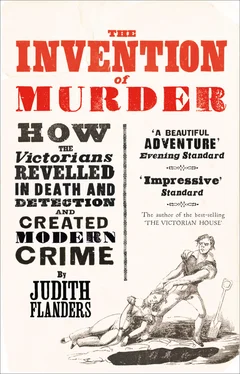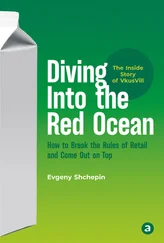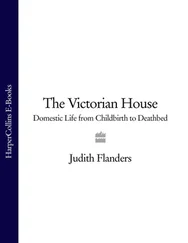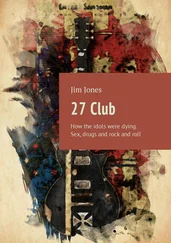All of these episodes were repeatedly recounted, not only in the newspapers, but in broadsides and ballads. The distinction between these forms of news was less rigid than it seems retrospectively. ‘The Confession of Burk’ [sic] is a broadside, but the content is in fact a reprint of news that had appeared in the Edinburgh Evening Courant the previous Saturday, while some of the newspapers elaborated an already extraordinary story with fictional devices: the Aberdeen Journal evidently saw no crossing of boundaries when it described, as though by an eye-witness, the death of one of the elderly victims.
This type of true-crime fiction was spreading. The Murderers of the Close was what today would be called a novelization, with ‘conversations put into the mouths of the different persons, as well as a few of the events, trifling in themselves, [that] are indeed fictitious’. The story sticks pretty closely to fact, with additional dialogue tacked on for drama or pathos. The book ends with Burke’s execution, and his religious meditations and remorse, and Hare’s escape, rounded off with pious thoughts for all. The illustrations were provided by Robert Seymour, whose fame was otherwise for comic imagery. (Seven years later he was to suggest to his publisher creating a series of comic illustrations, with text to be provided by a young journalist. Mr Charles Dickens duly agreed, and what became The Pickwick Papers was born.)
Actual Burke and Hare comedy was supplied by ‘Mansie Wauch’s Dream’ in the Aberdeen Journal the month after Burke’s execution. ‘Mansie Wauch’ was a fictional creation of David Macbeth Moir, a Scottish doctor, whose Life of Mansie Wauch, Tailor had appeared in Blackwood’s magazine and then in book form the previous year. Now, in his dream, Mansie is assaulted and boxed up for Dr Knox. First he is sanguine: ‘I had once dined with Dr Knox, and had some hope that, if I were beside him, I had a fair chance for my life.’ But when he is unpacked in the dissecting room, he hears Knox saying, ‘[T]his is indeed a prize; you have heard of Mansie Wauch, that’s him. I’d get five guineas for his skull from Mr—, the Phrenological Lecturer.’ ‘[M]y hopes in his mercy vanished like the morning dew,’ despairs Mansie, but fortunately the phrenologist is unwilling to buy a burked corpse. And so Mansie takes heart and shouts: ‘Murder – murder! I am Burked, but I winna be Knoxed.’
Unlike their practice with Maria Marten, the theatres in Britain at first held off from transforming this ugly story into melodrama. Not so in France, where the father of melodrama, René-Charles Guilbert de Pixérécourt (1773–1844), adapted it immediately as Alice, ou, Les Fossoyeurs écossais (‘Alice, or, The Scottish Grave-diggers’). Alice, a poor orphan, works for her aunt, a French innkeeper, and is in love with their lodger Edouard, a Scottish medical student. When he is wounded in a duel, Alice absents herself on mysterious trips, which the audience understands are to raise money for his medical care by in some way selling her body to be anatomized while she is alive – she daily ‘bares her arm to the unskilled knife of a young surgeon’, we are told vaguely. Edouard, recovered, goes home to Scotland to see his dying mother, and never returns. The abandoned Alice travels to Inverness, where Edouard confesses that he now has a rich fiancée. Alice then mysteriously vanishes, and in the last scene three resurrection men, Burke, Mac-Dougall and Rosbiff, arrive to sell Edouard a corpse, which is of course Alice. A very similar if much less elaborate British short story on the theme appeared two years later, when ‘The Victim. A True Story. By a Medical Student’ was published in the New Monthly Magazine. Again, a medical student’s fiancée vanishes, he buys a corpse from ‘an exhumator’, and it again turns out to be the missing fiancée, at which point the student goes mad.
Apart from these two forays, Burke and Hare provided little immediately in the way of popular entertainment that we know of. Generally the story was transformed into urban legend and scandalized word of mouth – in the early 1830s a friend of the poet John Clare was warned that trapdoors on London’s streets were left open deliberately, for the unwary to fall into underground lairs where they were robbed, killed and sold to the doctors. However, one newspaper reference to a fairground exhibition might indicate that there were ephemeral shows that were never recorded. The Examiner recorded that at Barnet, then a town outside London, an exhibition of some form of painted display, possibly a long, panoramic illustration on rolled canvas, showed the murderous pair at work, ‘certified to be correct to the minutest particular’. It had apparently also been shown in Edinburgh, and was to tour further.
There were a few other scattered references. Madame Tussaud, the founder of the waxworks dynasty and creator of the ‘Chamber of Horrors’ (at this date more sedately known as the ‘Separate Room’), had arrived in England in 1802, with models of the heads of executed French revolutionary heroes and villains. She spent the next thirty years touring the country, and in 1829, sixteen days after Burke’s execution, the Liverpool Mercury reported that she had on display ‘a likeness of the Monster Burke said to be taken from a mask of his face. we have no doubt that it will cause her exhibition to be crowded by persons anxious to see the features of a wretch whose crimes have hardly any parallels’. Two years later an advertisement for her show in Bristol promised that ‘THE BAND WILL PLAY EVERY EVENING’ while visitors examined both Burke and Hare’s features.
There appear to be no surviving plays about Burke and Hare in the Lord Chamberlain’s files, although there almost certainly were some productions at the minor theatres, never submitted for a licence. H. Chance Newton, a theatre critic born in 1854, said that among the earliest crime dramas he ever saw was one called Hawke the Burker. Leman Blanchard, in 1877, remembered that a theatre called the Shakespeare in Curtain Road, London, had at some time in the past produced ‘a piece founded on the murder of the Italian boy by Burke and Hare’. Whatever Blanchard was remembering had now become hopelessly confused: the murder of ‘the Italian boy’ took place in London in 1831, when two thugs named Bishop and Williams killed Carlo Ferrari, a street beggar, and tried to sell his body; Burke and Hare had no connection to this crime. Cecil Pitt’s Carlo Ferrari, or, The Murder of the Italian Boy played at the Britannia in 1869, but it seems unlikely that Blanchard would be so confused about a play that had been staged only eight years previously. Furthermore, the most comprehensive listing of London minor theatres gives only two named the Shakespeare, but neither was in Curtain Road.
By the 1860s, however, there was renewed interest in the Burkers. In 1859 the journalist G.A. Sala published ‘How I went to Sea’, a reminiscence of his schooldays, in which the boys were served up ‘a dreadful pie for dinner every Monday; a meat pie with … horrible lumps of gristle inside, and such strings of sinew (alternated by lumps of flabby fat) … We called it kitten pie – resurrection pie – rag pie – dead man’s pie.’ More soberly, Alexander Leighton, who otherwise specialized in tales of Scottish folklore, brought out The Courts of Cacus in 1861. (In Greek myth, Cacus was one of the sons of Vulcan, an eater of human flesh.) This was a highly romanticized novelization, beginning: ‘When the gloaming was setting in of an evening in the autumn of 1827, and when the young students of Dr Knox’s class had covered up those remains of their own kind from which they had been trying to extract nature’s secrets, one was looking listlessly from the window into the Square …’ and continuing with seventy-five pages of colourful tales of resurrection men, before finally getting around to the story of Burke and Hare.
Читать дальше












